Cattle indicators are strong – with confidence for the future
Key points
-
All cattle indicators are now over $3/kg.
-
Cattle indicators are performing their best since late 2022.
-
Producers are confident about elevated future prices.
All cattle indicators surpassed $3/kg for the first time in 3 years. The Dairy Cow Indicator rose 19¢ to reach 311¢/kg live weight (lwt). Cattle indicators have seen a combined increase of more than 9%, all rising over 32¢/kg.
A few interesting trends are appearing in the cattle market along with indicator growth.
Female indicators – processor categories are up over stable restocker categories
The Dairy Cow Indicator is now only 2¢/kg lwt lower than the Processor Cow Indicator. Both indicators have risen due to increased global demand for lean beef after US production decline. These two female indicators are also closing in on the Restocker Yearling Heifer Indicator.
The Restocker Heifer Indicator has not performed as well as other female cattle indicators. This is likely due to the southern drought, a slowing northern rebuild, reducing the need for future breeders, and the present significant heifer supply. It suggests producers are no longer investing in a long-term rebuild.
Steers
The Restocker Yearling Steer Price has jumped 20¢/kg lwt, or 5%, over the last month. It is now closing in on the Feeder Steer Indicator as the highest value indicator at 360¢/kg lwt. Restocker steers are performing well, in contrast to restocker heifers, with recent southern winter rain. This indicates producers with access to pasture feel they can background and trade steers, selling them into the high-priced feeder market.
With the gap closing between feeder and restocker yearling steers, producers will be encouraged to add weight to animals. Incentive for backgrounders to add weight to animals has been lacking for the last month as the feeder steer has far outpriced the restocker price.
Demand-driven
FY2024−25 is forecast to see the highest ever beef production. While high supply would usually dampen prices, these high livestock prices can be attributed to strong global demand.
Future focused
High restocker yearling steer prices indicate producers have short-medium term confidence about feeder steer and heavy steer prices. When prices for a restocker category rise, it indicates confidence in high finished market prices, otherwise high premium for restockers is not justified.
MLA’s Beef Producer Intentions Survey reinforced this confidence. It showed the industry has +53 basis point sentiment – its highest on record.
Recent rain, while not drought-breaking, has also helped positive restocker steer sentiment.
Attribute content to Stephen Bignell, MLA Market Information & NLRS Manager



